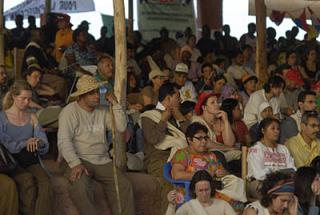By Anne Outwarer for Daily News Tanzania, on 3rd June 2012 (http://dailynews.co.tz/index.php/columnists/columnists/5819-monsanto-and-syngenta-funding-agra-for-africa)
In recent weeks we have been examining genetically engineered food plants. We have seen that they are not yielding as advertised, they are radical risks to the health of everything from microorganisms to human beings, they are dangerous to the natural ecosystem, they are crossing over into the natural environment, producing superweeds so that even more poisons are being poured on to compensate.
You want to think it isn’t true. You ask, “Why would people want to do such things?” Let’s keep a hold of that question while we look at the major perpetrators. Where do we find them? This is all about seeds – crop seeds. So we look to the companies which are trying to gain control of the worlds’ crop seeds.
The world’s largest seed company is Monsanto which is estimated to sell 23% of the world’s seeds; Dupont is second selling 15%, and Syngenta controls about 9%. Monsanto is a huge company. In 2009 the company’s managers posted net sales of $11.7 billion and net income of $2.1 billion. Monsanto was started in 1901, a company to make saccharine, an artificial sweetener. In the 1920’s and 1930s they were manufacturers of sulfuric acid and other chemicals, including polychlorinated biphenyls (PCBs). In the 1940s they manufactured plastics and synthetic fabrics. I am mentioning here only a few examples of the many well documented humanitarian disasters they have perpetrated for profit. In the 1960s an “agricultural” division was established. It was a weird kind of agriculture business because its focus was on herbicides. Monsanto was one of the principal companies supplying the herbicide known as Agent Orange (which contained the carcinogen dioxin) to the United States military for use in Vietnam War.
An estimated twenty million gallons was sprayed over 12% of the country of Viet Nam. The aim was to defoliate trees and shrubs so the Vietnamese soldiers could not hide; field crops were sprayed so that people could not feed themselves or the soldiers.
Agent Orange was soon linked to various health problems, including cancer. In 1984 US veterans settled out of court for $180 million, of which Monsanto alone had to pay 45%. Now the Department of Veterans Affairs officially recognizes a long list of horrible diseases related to herbicide exposure including:
Parkinson’s Disease, prostate cancer, lymphomas, leukemias, respiratory system cancers, and many other cancers; the children of Viet Nam vets are also affected with spina bifida, and congential and infantile cancers. Viet Nam Red Cross reports that 3 million Vietnamese people are victims of Agent Orange – including at least 150,000 children born with genetic deformities. The dioxin of Agent Orange is still in the soil there.
In 1976 Monsanto commercialized Roundup (glyphosate) herbicide, which became a top seller around the world. In 1996 they introduced the first genetically engineered biotech crop, Roundup Ready soybeans, which tolerate spraying of Roundup herbicide. Meaning they are now selling a quarter of the world’s seeds to increase the demand for their herbicide. Then they introduced genetically engineered canola, cotton and corn – called Roundup ready – ready for more herbicide. Serious complaints and legal claims against its factories – about the types of pollution that lead to reproductive, developmental and immune system disorders – followed them through the years. Finally Monsanto spun off its industrial chemical fibers business into a company called Solutia. In 2002-2003 a jury found that the Monsanto plant in Anniston, Alabama, polluted the community with PCBs.
Monsanto and its subsidiary Solutia agree to pay $600 million to settle those claims of PCB ground and water contamination. In 2003 Solutia conveniently declared bankruptcy. Monsanto lives on as an “agriculture” company. Again and again they have to pay fines for bribing government officials. In Indonesia alone they were found to have bribed 140 government officials or their families, to allow the entry into their country of Bt corn without a legally required environmental impact assessment. This company fights legislation that protects people. They are fined millions of dollars time and again for illegal dumping of poisonous wastes. Their published science is often found to be fraudulent; again and again they refuse to share study results. Should we feel comfortable when we learn that Monsanto and Syngenta are funding AGRA with the aim of bringing a “Green Revolution” to Africa?

